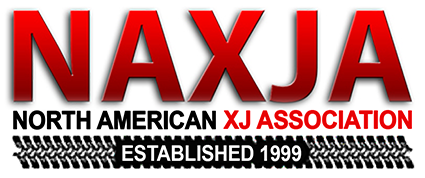Those aftermarket gages that work off the OEM HEGO signal are spotty at best - they depend on smoothing an output from a sensor that has a constant "waver" to it (figure the narrowband HEGO - the OEM sensor - switches from "lean" to "rich" about 15-20 times per second.) Also, there is no way for them to read AFR once it's more than a few points from stoichiometric.
That being said, they can help you keep tabs on what's going on - but they only work well for telling you "which way" and not "how much."
The best way to do the job will cost you about US$300, but that gets you a "wideband" HEGO sensor (which mounts in a bung you must have welded to your header/collector) and will give you usable readings from about 8.0 to 18.0:1 AFR - and accurately.
There are two types of HEGO sensor - the narrowband, or "knuckle" sensor, that gives you an accurate stoichiometric reading, but the signal falls off rapidly to either side of 14.7:1. This results in an indication of being rich or lean, but it doesn't give you much tuning information (like I said, it's "which way" but not "how much,") and also puts the ECM into a constant juggling act - every time it sees something other than 14.7 AFR, it jumps the other way - and goes back and forth constantly. I typically refer to this as "NHEGO" or "NBHEGO" when I'm writing about both types, or just "HEGO" when only the OEM.
The other type is a "wideband" HEGO (WHEGO/WBHEGO,) which is capable of giving quantitative signals over a wide range of AFR values. This allows the tuner to not only know if his engine is "rich" or "lean," but just how "rich" or "lean" and a better idea of what adjustment is needed. Originally marketed only in high-end testing equipment for about $1500 for the sensor alone, you can now get a WBHEGO sensor and accompanying meter for around $300 or less. This is a worthwhile investiment, particularly if you are tuning your engine to work with forced induction, alternative fuel, or nitrous oxide injection. Granted, this may be a little more information than most people are inclined to want, but it's imporant information (if I could only have two engine status gages, they would be WBHEGO and oil pressure - nearly everything else can be inferred by senses.)
Now that I've gone through all that...
Per my 1993 FSM (which should be quite similar to your 1995, even tho the wire colours are different) the HEGO has two circuits - one for the internal heating element, and one for the sensor output.
From left to right on my wiring diagram, the colours are:
Black - Light Blue trace line
Black - Dark Green trace line
Dark Green - Black trace line
Black - Tan trace line
I know the colours are different - bear with me.
The heating element will be grounded to the chassis, and fed +12VDC with the key on. This voltage signal will be steady - so you can isolate it quite easily. On my diagram, the heater wires are BLK/TAN and DKG/BLK. These can be ignored for your installation
The sensor circuit for the HEGO is the one you want - and you can figure the "sense ground" wire pretty quickly. Check the HEGO harness and the TPS harness for wires that share a common colour (on my diagram, they are BLK/LBU) - these are sensor grounds for the ECM. You should get continuity between any two sense grounds, since the ECM uses this as a "zero reference" for any sensor outputs. The remaining wire is the sensor output - which should read between 0 and 5VDC while the engine is running - with preference toward 2.5VDC.
As I said, this is using the 1993FSM wiring diagrams, so your colours will probably be different - but the principles are the same.
You should be able to make the connection anywhere convenient, but I'd want to get a signal as close to the point of generation as possible - I'd probably make a "T" that would go in between the HEGO connector and the underhood wiring harness connector, which would make it easier (you can bulid the T on the workbench, and just plug it right in.)
ABREVIATIONS -
NHEGO/NBHEGO - NarrowBand Heated Exhaust Gas Oxygen sensor
WHEGO/WBHEGO - WideBand Heated Exhaust Gas Oxygen sensor
OEM - Original Equipment Manufacture - what came in your vehicle from the factory
AFR - Air/Fuel Ratio
FSM - Factory Service Manual - what every XJ owner should have
BLK - BLacK
LBU - Light BlUe
GRN - GReeN
DKG - DarK Green
VDC - Volts Direct Current
When more than one colour is given for a wire, the first colour is for the "main" colour of the wiring insulation, and the second (& more) colours are for the "trace line" - which is used to allow for more distinct colouration and "grouping" of wires in vehicle electrics.
5-90
